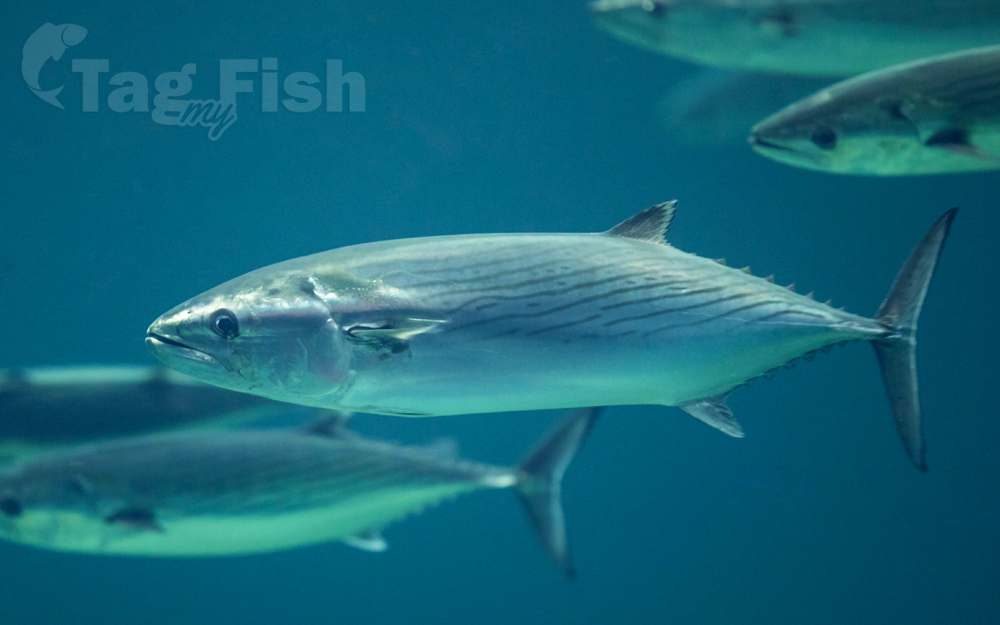Atlantic bonito
(Sarda sarda)

Classification
General data
The Atlantic bonito (Sarda sarda) is a large mackerel-like fish of the family Scombridae. It is common in shallow waters of the Atlantic Ocean, the Mediterranean Sea, and the Black Sea, where it is an important commercial and game fish.
Description
Atlantic bonito belong to a group that has the dorsal fins very near or separated by a narrow interspace. Its body is completely scaled, with those scales in the pectoral fin area and the lateral line usually larger in size. Bonitos (fishes in the genus Sarda) differ from tuna by their compressed bodies, their lack of teeth on the roof of the mouth, and certain differences in coloration.
Atlantic bonito share Atlantic waters with the striped bonito, Sarda orientalis (the Atlantic population of which is sometimes considered a separate species, Sarda velox). The striped bonito has been taken on the Atlantic coast as far north as Cape Cod. It is similar in its habits but somewhat smaller than the more common Atlantic bonito. The Atlantic bonito can be distinguished from its relative by its dark oblique stripes on the back and with a maxillary only about half as long as the head, whereas the striped bonito has striping on its topside nearly horizontal and a maxillary more than half the length of the head.
Atlantic bonito grow up to 75 centimetres (30 in) and weigh 5–6 kilograms (11–13 lb) at this size. The world record, 18 pounds 4 ounces (8.3 kg), was caught in the Azores.











